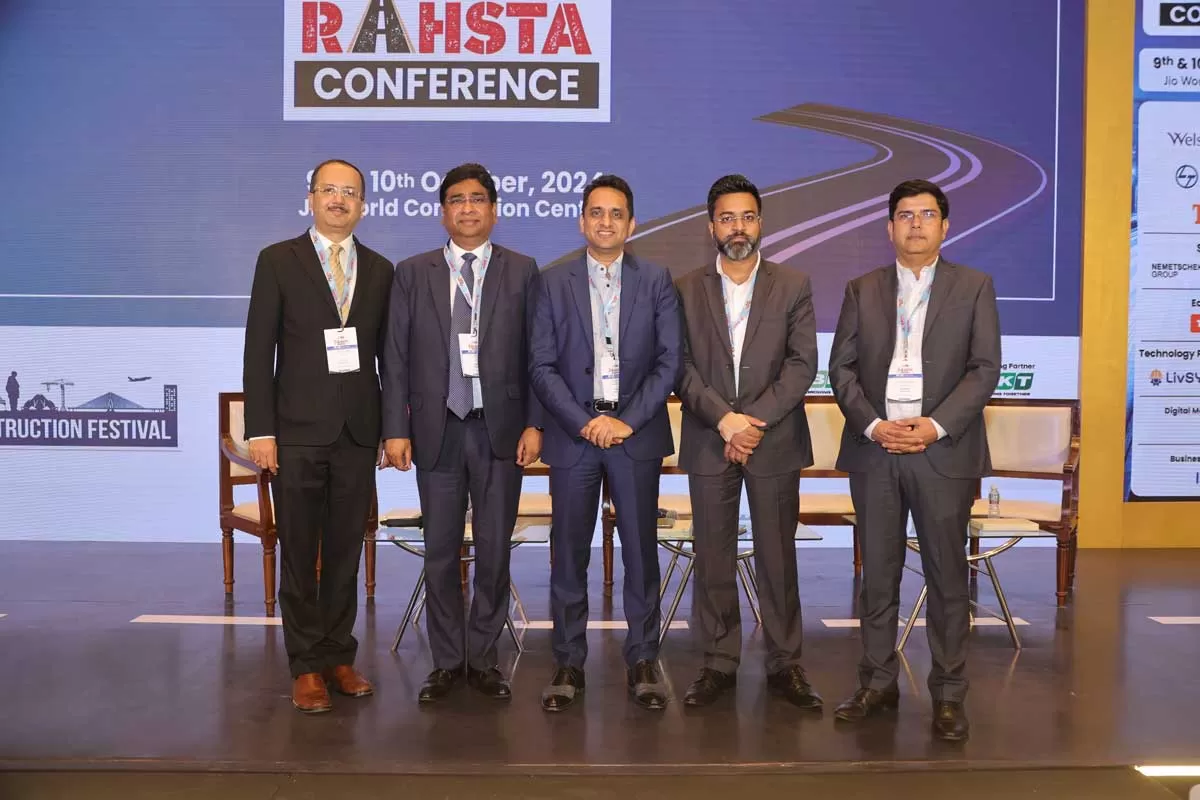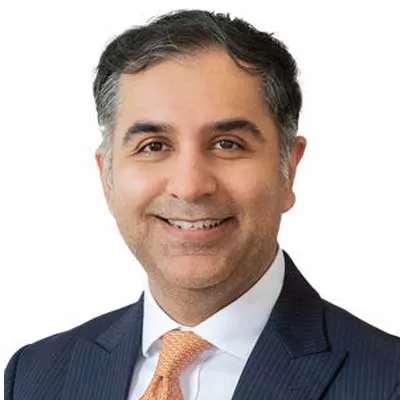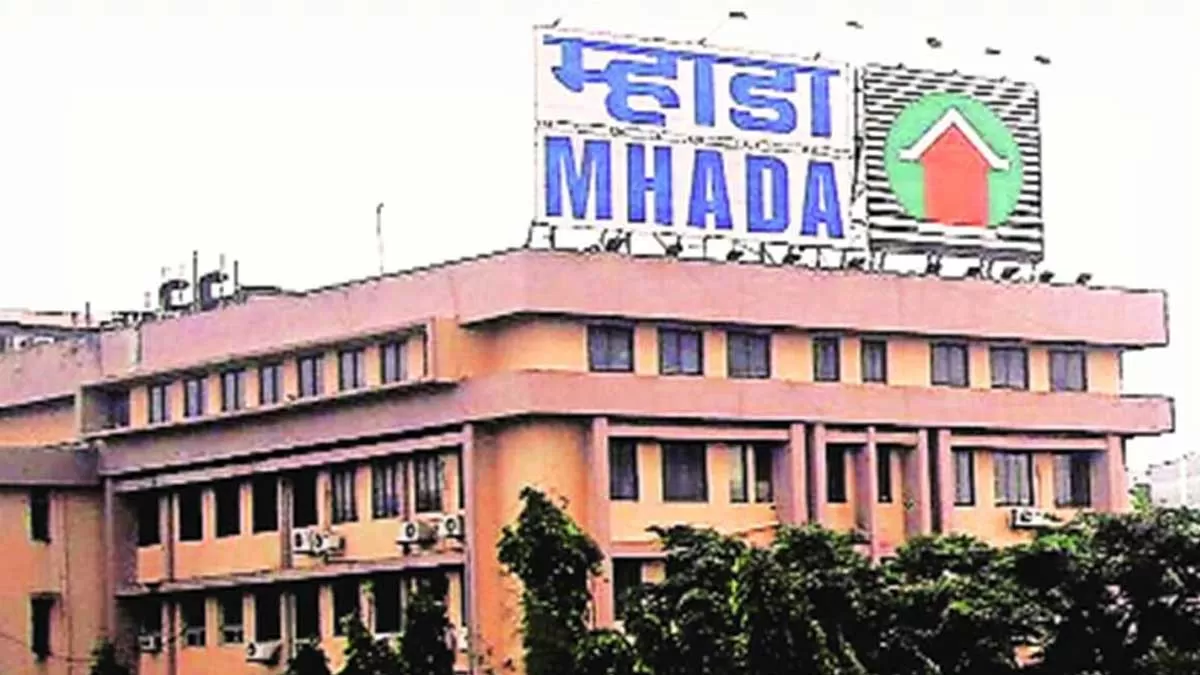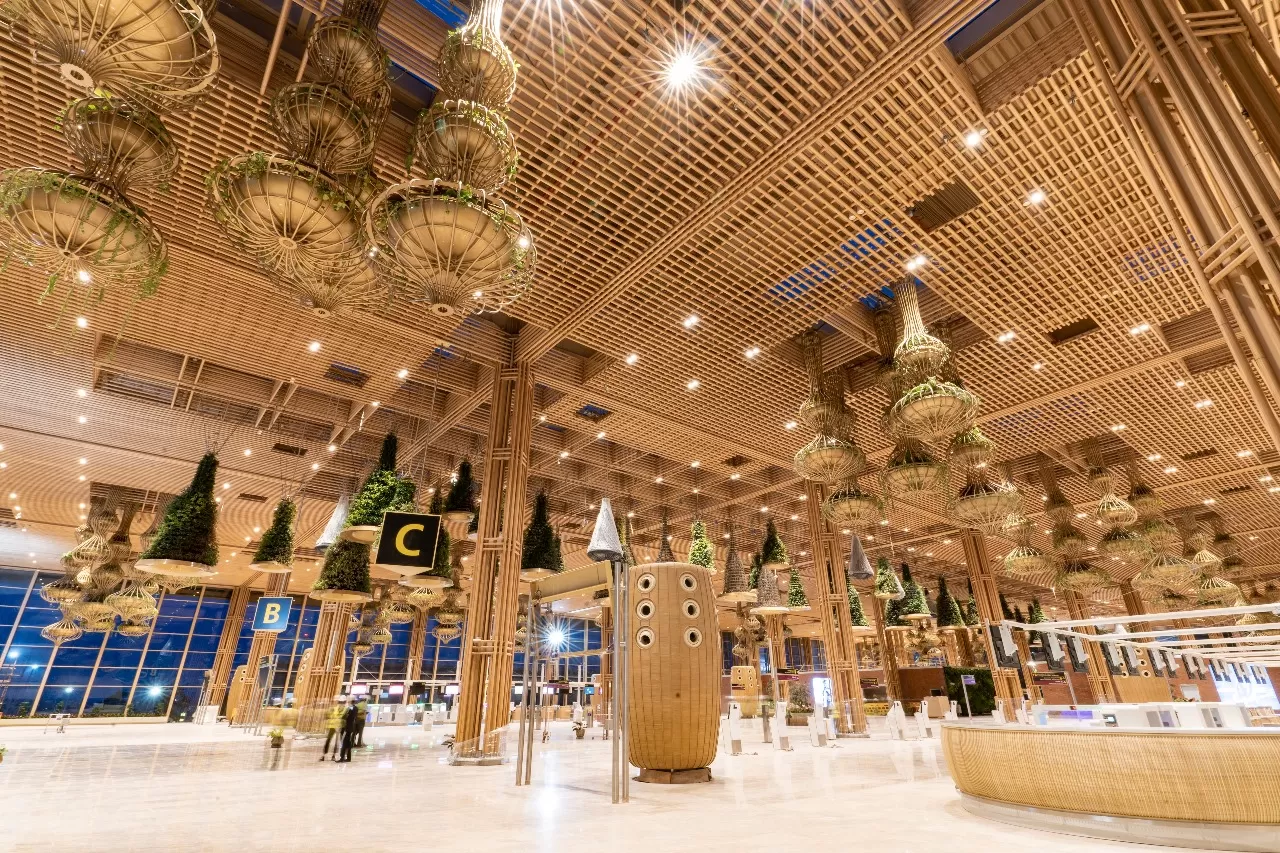The 10th edition of the India Construction Festival (ICF) 2024 – comprising the 14th RAHSTA Expo, 14th India RAHSTA (Roads) Conference and 22nd Construction World Global Awards – was held on October 9 and 10 at Jio World Convention Centre, Mumbai, and hosted by infrastructure think-tank FIRST Construction Council in partnership with CONSTRUCTION WORLD (CW) and Equipment India (EI) magazines.
The roads sector has witnessed a strong growth trajectory and the roads conference aptly chose multiple power-packed panel discussions on the topic. So read the detailed reports for insights into the various discussions as they unfolded over two days.
Tapping into India’s
economic engine
In a remarkable achievement, the country has doubled its road network over the past decade, which has not only enhanced connectivity but also attracted substantial investments from infrastructure investment trusts (InvITs). “From the investor’s perspective,” said Vijay Agarwal, Managing Director, Equirus Capital, “around 13 infrastructure investment trusts have been invested in road assets and nearly Rs 2 trillion is under investment.” Similarly, drawing from Upa Lokayukta Sanjay Bhatia’s remarks, Muraleemohan, COO, Maple Infra, highlighted growing international interest in Indian road assets and emphasised, “The time to be in India is now.”
He noted that the Government’s policies have created an unprecedented coexistence of multiple investor, developer and contractor classes within the highway industry, noting that the ecosystem offers equal opportunities to all players.
“This is what excites international investors,” he added.
Road assets as an
investment class?
Highlighting the robust infrastructure ecosystem in India, Muraleemohan called for greater recognition of different investor classes and their specific needs since policy stability is critical for institutional investors.
“Highways provide tolling assets that give investors exposure to toll revenues, which are directly linked to the country’s nominal GDP. Toll rates are inflation-indexed, allowing access to traffic volumes that correlate with the GDP, making it a great way to tap into the fastest-growing large economy in the world,” said Vineet Sarawagi, Head - Business Development, Interise, praising India’s highway sector as an attractive investment destination. Going further, to enhance the sector’s appeal he suggested that toll rates be indexed to both the Wholesale Price Index (WPI) and the Consumer Price Index (CPI) as blending both indices could provide a more accurate reflection of inflation and boost investor confidence in upcoming projects.
“Investors were hesitant to take on construction risk, which led to mixed experiences,” remarked Gaurav Chaturvedi, CFO, Nxtinfra, emphasising that InvITs have created a framework where different stakeholders could coexist more effectively. Breaking down the sector’s evolution, he described three distinct phases. “In the first phase, contractors took on the role of developers, primarily to feed their contracting arms and hold assets until maturity. The second phase saw investors entering the market, but many were cautious about the construction risk involved. Now, in the third phase, all stakeholders have a clearer understanding of their roles, making this an ideal time for collaboration and growth.” Chaturvedi concluded that this maturity in the sector presents a unique opportunity for stakeholders to engage in India’s infrastructure growth story with a balanced approach to risk and reward.
HAM and TOT: Easing
investor risk
Pointing out how HAM and TOT frameworks are instrumental in easing risk for investors, Deepak Chaudhary, Associate Director of Project Finance and Treasury, Sekura India Management, said a major portion of risk in road projects lies in the construction phase, which many international investors are hesitant to take on. “For these investors, TOT is an ideal solution, allowing them to focus on operational assets without construction risk.” In his view, risk assessment is critical and relying on external consultants is not enough. So he emphasised upon the need for a strong inhouse technical team to analyse and mitigate risks before entering any transaction.
Potential of GNSS for
toll collection
“Over the past 30 years, electronic toll collection (ETC) has been a major positive disruptor, addressing issues like revenue leakage and skirmishes at toll plazas. With 99 per cent of toll revenue now assured through technology, investors are only taking growth risks, not revenue collection risks,” said Muraleemohan about the transformative impact of
ETC systems.
He noted that global navigation satellite system (GNSS) and satellite-based tolling allows for precise tolling based on actual highway use, underlining the confidence it brings to investors. He also pointed out that GNSS requires significant infrastructure to detect vehicle entry and exit points on highways and suggested gantry-based tolling, which could eliminate the need for toll plazas entirely.
The road ahead
The 14th RAHSTA Expo – India’s first indoor trade fair for construction equipment technology – provided a platform to over 100 companies to showcase their latest technologies, products and solutions even as over 50 speakers discussed innovative technologies, sustainable practices and funding opportunities for the roads sector.
Summing up the event, Pratap Padode, Founder and President, FIRST CONSTRUCTION COUNCIL, and Editor-in-Chief, ASAPP Info Global, said, “India’s road-building progress is remarkable but questions around the quality and longevity of these roads persist and the need for climate-resilient infrastructure has come to the fore, especially after the devastating 2018 floods in Kerala, which damaged 25 per cent of the state’s highways and major roads. In response, India is making strides in building resilient infrastructure, with projects like the $ 500 million Green National Highways Corridor Project (GNHCP), aimed at constructing 800 km of climate-resilient highways across four key states by 2024. Similarly, the two-day conference, for its part, addressed the sector’s most pressing challenges and opportunities, offering valuable insights and paving the way for building resilient and sustainable road infrastructure in India.
---------------------------------------------------------------------------------------------------------------------------------------------------------------------------------------------------------------------------------------------------------------
“PM Gati Shakti addresses planning gaps in infrastructure projects.”
The programme reduces logistical costs that currently account for 13-14 per cent of India’s GDP.
Launched to transform the nation’s infrastructure development, PM Gati Shakti is a groundbreaking initiative that emphasises the importance of collaboration among different ministries and stakeholders to create a cohesive infrastructure framework. By mapping over 900 layers of data related to existing and upcoming projects, it enhances project transparency and efficiency, significantly reducing logistical costs that currently account for 13-14 per cent of India’s GDP.
Shining amid crisis
“India embarked on the $ 1.4 trillion National Infrastructure Pipeline at a time when the world was a troubled place,” said Bharat Parekh, Executive Director, CLSA. “As far as execution is concerned, like almost at the peak of COVID, clearly we changed the track of the past 30 to 40 years of subsidies and freebie-driven budgets to capex-driven economic recovery. That’s what has made India a shining star on the global map. And with doubling of the capex in the Budget, the fruits are now very clear for us to see where our growth is clearly different from the world. What we are going to do today is to dig deeper into challenges to infrastructure assets from here on.”
The core of Gati Shakti
“The core objective of Gati Shakti is to address the significant planning gaps in infrastructure projects across the country,” said Vinod Yadav, Director (Transport) NCC, laying emphasis on its focus on driving economic growth. He summarised the vision of PM Gati Shakti as a transformative approach aimed at driving economic growth and sustainable development by creating a seamless synergy between infrastructure sectors, fostering innovation and reducing costs.
Unified data
“The private sector should benefit from the vast database and information available on the Gati Shakti portal,” said Abhishek Chaudhary, President of Business Development and Strategy, Welspun Enterprises, laying stress on the need for better DPRs and accountability and highlighting the significant progress made under PM Gati Shakti with over 900 layers of data already integrated into the portal. He called for the portal to be made accessible to consultants, financiers, developers and contractors, which would further enhance project execution, enabling smoother operations and better-informed decision-making across India’s infrastructure landscape. “The top-down approach has been well-executed but the bottom-up implementation, where the real work happens, still needs to catch up for the true potential of PM Gati Shakti to be achieved,” he added.
World-class infrastructure
“It’s a fantastic concept at the macro level,” said Ashish Kataria, Director, Ashoka Buildcon, acknowledging the PM Gati Shakti initiative’s ability to streamline national infrastructure development and laying a strong structural foundation aimed at aligning efforts towards building world-class infrastructure while avoiding duplication of work. He also highlighted the need for better coordination and foresight during the project planning and design stages to ensure the successful implementation of ambitious goals.
DPR challenges
Kataria emphasised that DPRs, often prepared by consultants, are critical to a project’s success but are frequently marred by oversight. “The problem is that consultants who draft these DPRs often miss key design elements or fail to engage essential stakeholders early on,” he noted, adding that this leads to demands for modifications like flyovers or vehicle overpasses (VOPs) once the project is already underway. He suggested that greater accountability from DPR consultants is necessary, proposing a system where consultants remain financially engaged until at least 25 per cent of the project is completed.
Concluding his remarks, Kataria commented on the PPP model, stating that while it is often touted, “the first ‘P’ – public – tends to disappear after the award of the concession,” underscoring the need for genuine collaboration between the public and private sectors.
Land acquisition delays
“Projects were awarded but land acquisition did not happen,” said Shatrughan Singh, Chief Commercial Officer, Birla Pivot, emphasising that land acquisition continues to be a significant hurdle in project completion. Drawing on his past experience, he recounted how he witnessed delays in the National Highways Development Programme (NHDP) due to insufficient land acquisition. “Designs were based on outdated data from 40 to 50 years ago, leading to severe complications during construction,” he said, highlighting the need for more accurate and up-to-date data.
On a more optimistic note, Singh praised the initiative as a substantial step forward in addressing these challenges. “The nation is being master-planned in terms of industrial zones and multimodal transport, which is incredibly exciting.”
Leveraging technology
Singh highlighted the potential of technological advancements to improve project execution, noting that many issues faced on the ground can be mitigated through better technology adoption. He also reiterated the importance of embracing technological advancements in project management to minimise delays and cost overruns, which he believes are linked to over 90 per cent of projects not finishing on time. “It’s all about working together to adopt technology for better project management and controls,” he added.
The way ahead
The PM Gati Shakti programme, with its focus on transparency, efficiency and cost reduction, is poised to not only modernise infrastructure but also enhance India’s global competitiveness.
------------------------------------------------------------------------------------------------------------------------------------------------------------------------------------------------------------------------------------------------------------
“India’s road network consumes 1.2 bn tonne of aggregates annually.”
The road construction industry is adopting methods to reduce embodied carbon in materials.
As the demand for eco-friendly infrastructure grows, the road construction industry is adopting innovative methods to reduce emissions and embodied carbon
in materials, addressing the
global push towards sustainable development and setting a path
for a more resource-efficient future in infrastructure.
Embodied and operational carbon in the cement sector
“While operational carbon – emissions during usage – gets much attention, embodied carbon, which accounts for emissions during construction, represents a significant portion, especially in highways where 50-60 per cent of carbon is embodied,” said Monika Shrivastava, Head of Sustainability, JSW Cement, highlighting the importance of addressing both embodied and operational carbon footprints in road and infrastructure projects. She noted that using ground granulated blast furnace slag (GGBS) as an eco-friendly alternative to ordinary Portland cement (OPC) reduces carbon emissions from 740 kg per tonne (OPC) to 80 kg per tonne, significantly lowering the environmental impact. As cement manufacturing emits significant amounts of CO2, around 20 per cent of the company’s energy is sourced from renewables, including solar power. It aims to increase this from 20 to 60 per cent by 2030, aligned with its broader sustainability goals.
Use of eco-friendly materials
“In many of our road projects, we’ve implemented pavement quality concrete (PQC) and residual pavement methods with cement content limited to 450 kg per cu m,” said Satyanarayan Purohit, Vice President, Dilip Buildcon, emphasising the company’s commitment to sustainable construction practices. As a case in point, he highlighted the use of GGBS in the construction of the Zuari Bridge in Goa, where about 90,000 metric tonne of GGBS was utilised, reducing carbon emissions by around 40,000 tonne. As for use of recycled plastic in road construction, he noted that sourcing remains an issue.
Waste to wealth
“In infrastructure development, the focus must be on the three Rs: reduce, reuse and recycle,” said
Dr Satish Pandey, Principal Scientist, Central Road Research Institute (CRRI). “India has the second-largest road network globally, which consumes about 1.2 billion tonne of natural aggregates annually for construction and maintenance.” To tackle this growing shortage of aggregates, CRRI has developed steel slag road technology, which repurposes waste steel slag as a substitute for natural aggregates. India produces around 20 million tonne (mt) of steel slag annually, a figure that is expected to triple by 2030.
Steel and CO2 footprint
“Steel is the backbone of infrastructure and its production has both challenges and opportunities, especially as global standards push for reduced carbon emissions,” said Neeraj Kant Jha, AVP - Sales and Marketing, MS Agarwal, emphasising the critical role of the steel industry in infrastructure development and sustainable highway construction. “Our commitment to delivering greener steel aligns with the increasing demand from customers for environment-friendly products,” he added about the sector’s adoption of electric arc furnaces (EAFs). As the Indian steel sector is set to undergo a major transformation, with the Ministry of Steel targeting net-zero emissions by 2070, requiring an investment of around $ 230-240 billion, Jha highlighted the need for innovative energy sources, such as hydrogen, to replace traditional coal-based processes.
Materials, machinery and skilled workforce
“Machinery alone cannot construct roads; it is the trained workforce that ensures quality and sustainability. If any link in this chain is weak – be it subpar manpower or machinery – the goal of achieving sustainable infrastructure will falter,” cautioned Prof Dharamveer Singh, Department of Civil Engineering, IIT Bombay. He pointed out that despite access to world-class machinery and materials, he had witnessed numerous road failures within just two years of construction owing to inadequate training and quality control. He also suggested adoption of innovative technologies to improve road longevity and reduce reliance on natural aggregates.
The green way ahead
The panel discussion focused on sustainable construction innovations in various sectors concluding with a call to action in terms of continued innovation and adoption of sustainable practices.
-----------------------------------------------------------------------------------------------------------------------------------------------------------------------------------------------------------------------------------------------------
“HAM has done wonders for the roads sector.”
A look at the transformative shift from traditional EPC contracts to more dynamic frameworks such as BOT and HAM.
The evolution of road infrastructure models has become a focal point in discussions surrounding sustainable development and investment in India. Recent dialogues have highlighted the transformative shift from traditional EPC contracts to more dynamic frameworks such as BOT and HAM, underscoring the crucial role of the National Highways Authority of India (NHAI) in fostering PPPs that are vital for the country’s infrastructure growth. At this point in time, the Ministry of Road Transport & Highways (MoRTH) and NHAI had missed their national highway construction targets in six of the past 10 years. Also, the Government is now looking to reduce its debt to Rs 1 trillion by 2024-25.
“We have NHAI, which everyone has been discussing, but it would be interesting to hear the Maharashtra State Road Development Corporation (MSRDC) perspective, given their active involvement in road projects,” said moderator Suneet Maheshwari, Chairman, Udvik Infrastructure, expressing a desire to explore NHAI’s insights on attracting Indian developers back into the sector. He opened the session by highlighting the pivotal role of NHAI and emphasised upon the importance of understanding the current landscape.
HAM: Revolutionising road infrastructure
“In the past 10 years, HAM has done wonders for the roads sector,” said Sandeep Upadhyay, Managing Director, Centrum Infrastructure, about the transformative impact of HAM over the past decade. “All these EPC companies, which were struggling at one point in time with respect to keeping pace in terms of raising capital, investing, taking the traffic as well as the construction risk at the same time and convincing the bankers, found the HAM model very interesting. As the name itself suggests, it’s a hybrid,” he said. Describing it as a “deferred EPC model,” he highlighted its suitability for EPC players, providing a strategic framework that allows for a 15-year operational horizon – an innovative approach that has not only facilitated investment but also streamlined the process of securing financing from banks, ultimately revitalising the sector.
Balancing HAM, EPC AND BOT
“Many established road developers who were taking market risks have completely vanished from this particular part of it so it is becoming more an EPC or deferred EPC game and nobody wants to take a market risk,” said Jagannarayan Padmanabhan, Senior Director and Global Head of Transport, Logistics and Mobility, CRISIL, expressing concern over the shifting dynamics in the sector. “That’s probably one of the discussion points we should have on how to bring that back and who can take that kind of a market risk. There are some people who want to take it, but the enabling environment is a lot more focused towards HAM and EPC projects. So, that’s the somewhat not-so-good aspect of HAM coming through, which has kind of edged out BOT players completely.”
While the sector has seen successful projects under HAM, we must also encourage Indian bidders to take on market risks to maintain a competitive landscape, he asserted, highlighting the need for a balanced approach between EPC projects and market-risk-bearing models.
Bidders, finance and equipment
“I have seen the technological capacity being built up in India outside; that’s why I asked what foreign parts were there; I saw some equipment that is made in India,” said Ashish Kumar Singh, Chief General Manager of Finance, NHAI, acknowledging the increasing presence of domestically manufactured equipment, reflective of a shift towards self-reliance. He emphasised that the bidding capacity of contractors is closely linked to their financial capabilities, noting that improved financing options can add substantial value to projects. He also commended the efforts of RAHSTA for fostering collaboration and coherence within the ecosystem, which is crucial to enhance the overall effectiveness and affordability of road construction in the country.
Driving Maharashtra’s infra success
“Right now, we are executing Rs 810 billion worth of projects,” said SK Survase, Chief Engineer, MSRDC, adding that a bid has been made for an additional Rs 1,110 billion worth of projects. He revealed that there are projects valued at Rs 1710 billion in the DPR stage, bringing the total project pipeline to an impressive Rs 3 trillion, “for which bankers are ready to fund us.” He expressed confidence in securing funding from bankers, contingent on support from the Maharashtra government in terms of equity and bank guarantees. With a solid land bank in place, he emphasised that MSRDC is poised to continue its success in delivering these significant infrastructure projects.
The way ahead
The discussion focused on leveraging 98 per cent of India’s roads for infrastructure development, emphasising the shift from EPC to BOT models to enhance quality and sustainability. Even as the Government plans to add 50,000 km of high-speed corridors by 2047, the immense potential for transforming India’s road network into valuable assets can be seen from the fact that while National Highways comprise only 2 per cent of the country’s total roadways, a staggering 98 per cent of roads present untapped opportunities for monetisation and infrastructure development.
------------------------------------------------------------------------------------------------------------------------------------------------------------------------------------------------------------------
“Digital tools will meet India’s infrastructure demands”
Innovations are driving sustainable road development across India.
PPPs accelerate road growth
“Over the past decade, India’s road sector has experienced a significant transformation, fuelled by strong government backing and a surge in private-sector investment,” according to Anshumali Srivastava, Chief General Manager – Tech, NHAI. Speaking about the evolution of the sector since 2014, Srivastava highlighted how the shift from solely budgetary support to PPP models has been a gamechanger. Despite increased government spending, Srivastava noted that the sector still has an appetite for further investment, with private players stepping in to fill the gap.
The reason for road accidents is faster roads
“While India’s road infrastructure has significantly improved with high-quality construction and advanced geometric designs, there has been an unintended rise in accidents,” said Dr Tom V Mathew, Professor and Head of Civil Engineering, IIT Bombay. He emphasised that the new roads offer smoother driving conditions and higher speeds. However, this increase in speed has led to a surge in accidents, not due to construction or design flaws but because drivers are unaccustomed to the improved infrastructure. “The issue lies in driving behaviour and habits, which haven’t adapted to the higher speeds enabled by the new roads.”
Leveraging technology for ambitious targets
“As India’s infrastructure projects grow more ambitious, meeting tight construction deadlines has become increasingly critical,” said Nirmalaya Chatterjee, Country Vice President (Indian Subcontinent) Nemetschek Group. “We cannot double our workforce or contractors to match these targets. The solution is how effectively we can leverage technology to enhance efficiency and productivity,” he added, highlighting the vital role of digital tools in meeting India’s infrastructure demands.
Cement targets net zero, doubling production
“India’s cement and concrete production is set to double or even triple by 2070,” Kaustubh Phadke, India Head, Global Cement & Concrete Association (GCCA), said, emphasising the industry’s commitment to achieving net-zero emissions by that same year. “As India’s demand for construction materials continues to surge, GCCA is aligning with the country’s ambitious sustainability goals.” He added, “We are striving to reach net-zero emissions in concrete production by 2050, while also supporting India’s broader net-zero target by 2070 and the vision of a Viksit Bharat by 2047.”
“We are here as builders to introduce all the technologies given by all the members of the dais,” said Aniruddha Nakhawa, Structural Consultants and Project Engineers, Builders Association of India (BAI). “One of our builders from Gujarat has set a world record for construction of a 100-km road in 100 hours.”
The way ahead
The discussion emphasised how these innovations are driving smarter, more sustainable road development across India, aligning with the country’s broader ambitions for economic growth and infrastructure modernisation.


















